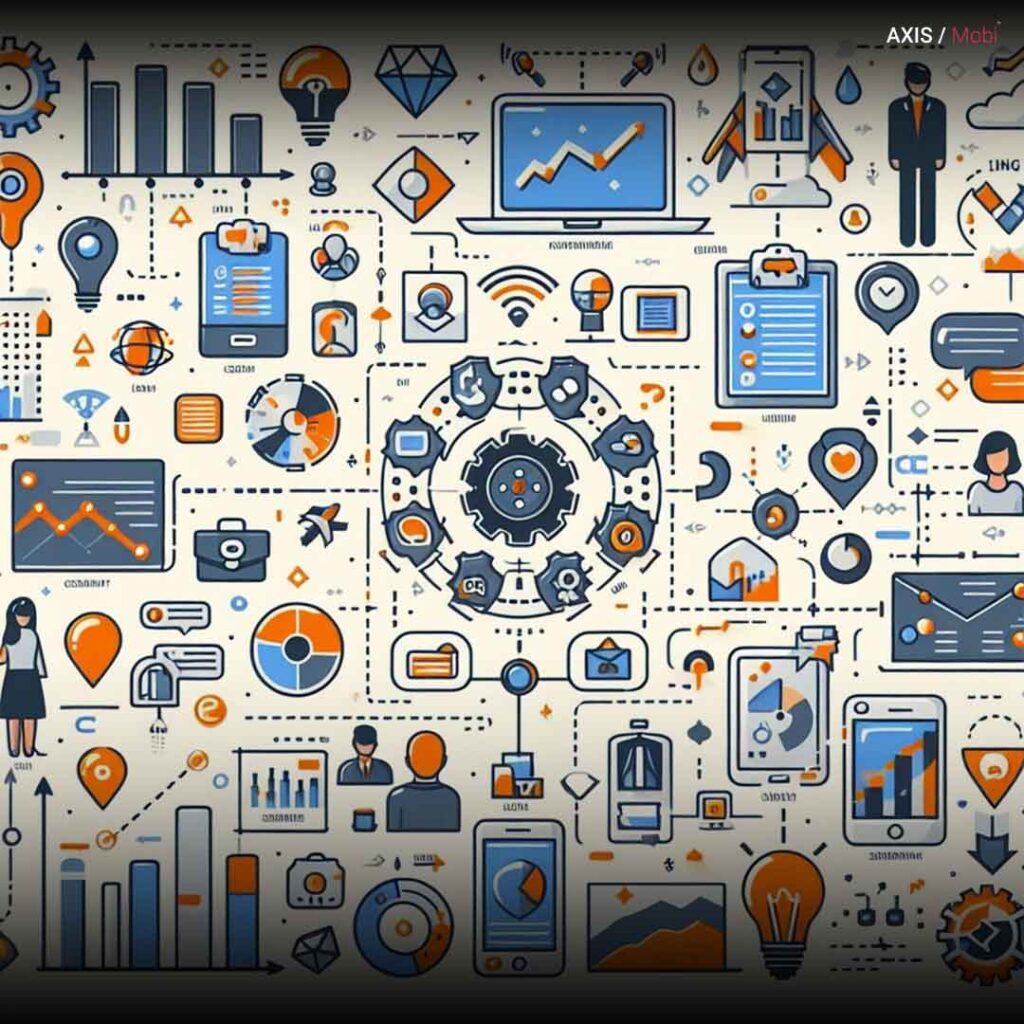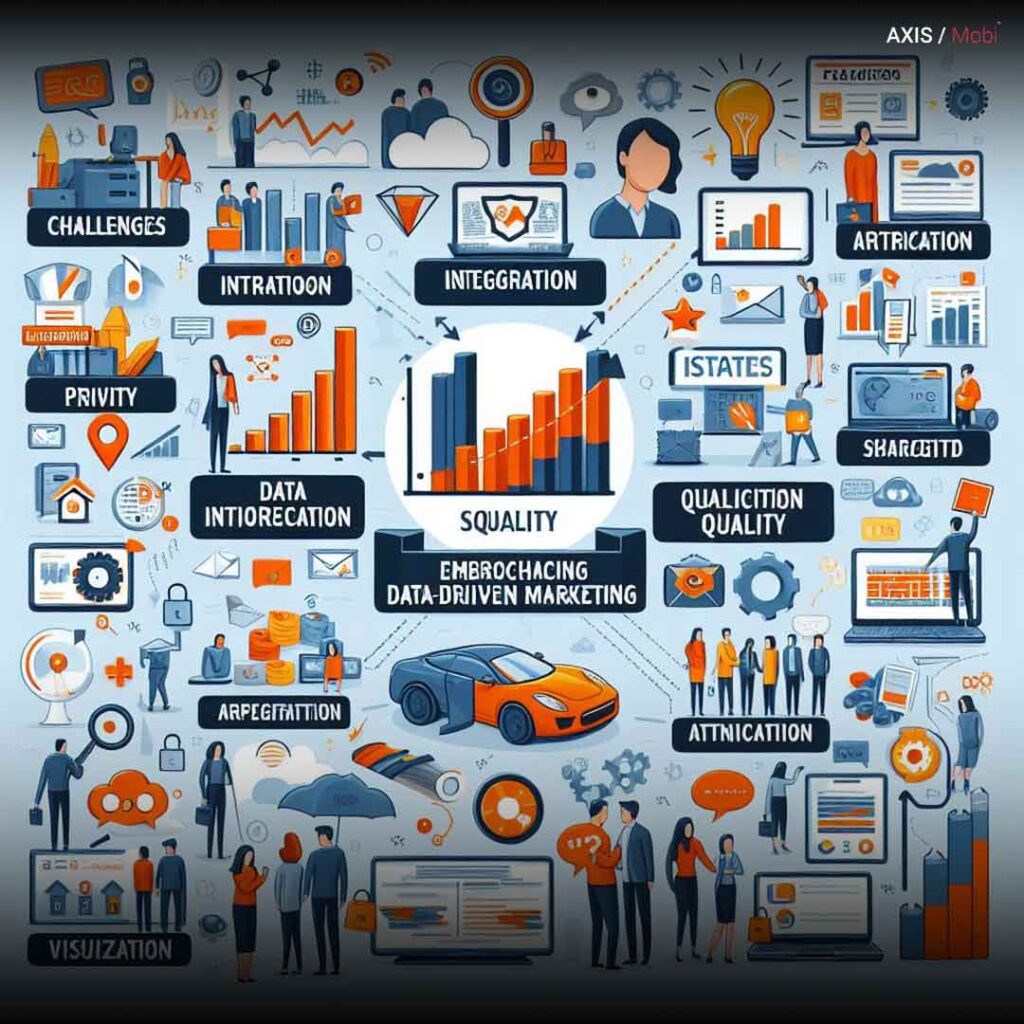In the ever-evolving landscape of digital marketing, one strategy has emerged as a game-changer: data driven marketing. This approach leverages the wealth of data available today to make informed decisions, personalize campaigns, and optimize marketing efforts. By harnessing the power of data, businesses can not only improve their return on investment (ROI) but also create more meaningful and relevant experiences for their customers. In this comprehensive guide, we’ll explore the world of data driven marketing, its impact on ROI, and how your business can embrace this transformative approach.
Understanding Data Driven Marketing

Data driven marketing is a strategic approach that uses data and analytics to guide marketing decisions and campaigns. It involves collecting, analyzing, and interpreting data from various sources to gain insights into customer behavior, preferences, and trends. These insights inform marketing strategies, enabling businesses to deliver personalized, relevant, and effective campaigns.
Key Principles of Data Driven Marketing

- Data Collection: Gathering data from multiple sources, including websites, social media, email campaigns, customer surveys, and more.
- Data Analysis: Using advanced analytics tools and techniques to process and interpret the collected data, uncovering valuable insights.
- Personalization: Tailoring marketing messages and content to individual customers based on their behavior, preferences, and demographics.
- Continuous Optimization: Iteratively improving marketing campaigns based on data, feedback, and performance metrics.
- Segmentation: Dividing the audience into segments based on shared characteristics or behavior patterns to target them more effectively.
The Impact of Data Driven Marketing on ROI

Implementing data driven marketing strategies can have a significant impact on ROI across various aspects of your marketing efforts:
1. Improved Customer Engagement
Data driven marketing allows you to create highly personalized and relevant content for your audience. When customers receive messages and offers that align with their interests and needs, they are more likely to engage with your brand. This increased engagement can lead to higher conversion rates and, ultimately, improved ROI.
2. Higher Conversion Rates
Personalization and targeted messaging can significantly boost conversion rates. By delivering the right message to the right person at the right time, you increase the likelihood of a customer taking the desired action, whether it’s making a purchase, signing up for a newsletter, or requesting more information.
3. Reduced Customer Acquisition Costs
Data driven marketing allows you to identify and target your most valuable customer segments. By focusing your efforts on high-converting audiences, you can optimize your marketing budget and reduce customer acquisition costs. This means you get more value from your marketing spend, increasing ROI.
4. Enhanced Customer Retention
Personalization isn’t limited to acquiring new customers; it’s also vital for retaining existing ones. By understanding your customers’ preferences and behavior, you can tailor retention campaigns, loyalty programs, and offers that keep customers coming back. Retaining customers is often more cost-effective than acquiring new ones, positively impacting ROI.
5. Better Marketing Attribution
Data driven marketing provides insights into which marketing channels and tactics are driving conversions. This information enables you to allocate your marketing budget more effectively, focusing on strategies that deliver the highest ROI. Improved marketing attribution ensures that every dollar spent contributes to your bottom line.
6. Optimized Content and Creative
Data analysis can reveal which types of content and creative elements resonate best with your audience. By creating content that aligns with your customers’ preferences and behavior, you can increase engagement and drive better results. This optimization leads to a more efficient use of marketing resources and improved ROI.
7. Reduced Wasteful Spending
Data driven marketing helps identify ineffective strategies and campaigns that are not delivering a positive ROI. By eliminating or adjusting these underperforming elements, you can reduce wasteful spending and allocate resources to more profitable initiatives.
8. Real-time Adaptation
Data driven marketing allows you to adapt and refine your strategies in real-time based on current data. This agility ensures that your marketing efforts are always aligned with the latest trends and customer preferences, maximizing ROI.
Embracing Data Driven Marketing: A Step-by-Step Guide

Now that we understand the impact of data driven marketing on ROI, let’s explore how to embrace this approach within your organization:
1. Data Collection and Integration
- Identify Data Sources: Determine which data sources are relevant to your business, such as website analytics, CRM systems, social media, email marketing, and customer surveys.
- Data Quality Assurance: Ensure data accuracy, completeness, and reliability. Cleanse and validate data regularly to minimize errors.
- Data Integration: Integrate data from different sources and systems to create a unified view of each customer.
2. Customer Segmentation
- Segmentation Strategy: Develop a segmentation strategy based on relevant customer characteristics and behavior, such as demographics, purchase history, and engagement levels.
- Segmentation Tools: Utilize customer segmentation tools or platforms to automate the process and create dynamic segments.
- Segmentation Personalization: Tailor marketing messages and campaigns to each customer segment’s unique preferences and needs.
3. Personalized Content
- Content Mapping: Map out personalized content journeys based on customer segments. Determine what content will be most engaging and relevant to each segment.
- Personalization Tokens: Use personalization tokens to insert dynamic content, such as the recipient’s name or location, into marketing materials.
- Dynamic Email Campaigns: Create personalized email campaigns with dynamic content that changes based on the recipient’s behavior, preferences, or lifecycle stage.
4. Data Driven Campaigns
- A/B Testing: Conduct A/B tests to compare different variations of marketing messages, images, and calls to action. Use the results to optimize campaigns.
- Predictive Analytics: Implement predictive analytics to anticipate customer behavior, such as purchase intent or churn risk, and adjust marketing strategies accordingly.
- Marketing Automation: Leverage marketing automation platforms to trigger personalized messages, such as welcome emails or abandoned cart reminders, based on customer behavior.
5. Measurement and Analysis
- KPIs and Metrics: Define key performance indicators (KPIs) and metrics to measure the success of data driven marketing campaigns, such as conversion rates, customer lifetime value (CLV), and ROI.
- Analytics Tools: Use analytics tools and dashboards to monitor campaign performance in real-time. Identify trends, anomalies, and opportunities for optimization.
- Customer Feedback: Collect customer feedback through surveys, reviews, and social media to gain qualitative insights that complement quantitative data.
6. Continuous Optimization
- Iterative Approach: Embrace an iterative approach to data-driven marketing. Continuously analyze data, identify areas for improvement, and refine your campaigns.
- Feedback Loop: Establish a feedback loop between marketing, sales, and customer support teams to ensure that insights are shared and used to refine marketing strategies.
- Stay Informed: Stay up-to-date with the latest marketing technologies, trends, and best practices in data-driven marketing to remain competitive and maximize ROI.
Challenges in Embracing Data-Driven Marketing

While data-driven marketing offers significant benefits, it also comes with its set of challenges:
- Data Privacy and Compliance: Stricter data privacy regulations, such as GDPR and CCPA, require businesses to handle customer data with care and ensure compliance.
- Data Quality: Inaccurate or incomplete data can lead to flawed insights and ineffective personalization.
- Data Security: Safeguarding customer data from breaches and cyber threats is a constant concern.
- Resource and Skill Constraints: Data-driven marketing demands skilled professionals and adequate resources for data collection and analysis.
- Algorithm Bias: Machine learning algorithms may introduce bias in personalization, leading to unintended consequences.
The Future of Data-Driven Marketing

The future of data-driven marketing is exciting and full of opportunities. Here are some trends that will shape the future of this field:
- AI-Powered Personalization: AI and machine learning will play a more significant role in automating personalization efforts and making them more accurate.
- Hyper-Personalization: Marketing messages will become even more tailored to individual preferences and behaviors.
- Voice Search Optimization: As voice search grows, optimizing marketing strategies for voice-based interactions will become crucial.
- Privacy-First Marketing: Businesses will need to prioritize customer data privacy and adopt transparent data practices.
- Augmented Reality (AR) and Virtual Reality (VR): AR and VR will create new opportunities for immersive and personalized marketing experiences.
- Data-Driven Storytelling: Marketers will use data to craft compelling stories and narratives that resonate with their audience.
Conclusion
Data-driven marketing is not just a buzzword; it’s a fundamental shift in how businesses approach marketing. By harnessing the power of data, organizations can better understand their customers, personalize their interactions, and drive more effective campaigns. The impact on ROI is clear: improved customer engagement, higher conversion rates, reduced customer acquisition costs, enhanced customer retention, better marketing attribution, optimized content, and reduced wasteful spending.
As data continues to play an increasingly vital role in marketing, businesses that adapt and innovate in their data-driven approaches will continue to lead the way, setting new standards for customer engagement and business growth. Embracing data-driven marketing is not just an option; it’s a strategic imperative for success in today’s digital landscape.
General FAQs Related to Data-Driven Marketing:
-
What is data driven marketing?
Data-driven marketing is a strategic approach that utilizes data and analytics to inform marketing decisions and campaigns. It involves collecting, analyzing, and interpreting data from various sources to gain insights into customer behavior, preferences, and trends. These insights guide the creation of personalized and effective marketing strategies.
-
Why is data driven marketing important?
Data-driven marketing is crucial because it allows businesses to make informed decisions, personalize campaigns, and optimize marketing efforts. By leveraging data, organizations can improve their return on investment (ROI) and create more meaningful and relevant experiences for their customers.
-
What are the key principles of data driven marketing?
The key principles of data-driven marketing include data collection from multiple sources, data analysis using advanced tools, personalization of marketing messages, continuous optimization based on data, segmentation of the audience, and an emphasis on improving marketing attribution.
-
How does data driven marketing impact ROI?
Data-driven marketing positively influences ROI by improving customer engagement, increasing conversion rates, reducing customer acquisition costs, enhancing customer retention, providing better marketing attribution, optimizing content and creative, reducing wasteful spending, and allowing real-time adaptation based on current data.
-
What challenges come with embracing data driven marketing?
Challenges in data-driven marketing include concerns about data privacy and compliance, the need for high-quality data, ensuring data security, dealing with resource and skill constraints, and addressing potential bias in machine learning algorithms used for personalization.
-
What does the future hold for data driven marketing?
The future of data-driven marketing includes trends such as AI-powered personalization, hyper-personalization, voice search optimization, privacy-first marketing practices, the integration of augmented reality (AR) and virtual reality (VR), and the emergence of data-driven storytelling to create more engaging narratives.
-
How does data driven marketing improve customer engagement?
Data-driven marketing improves customer engagement by enabling businesses to create highly personalized and relevant content. When customers receive messages aligned with their interests, they are more likely to engage, leading to higher conversion rates and improved ROI.
-
How can data driven marketing reduce customer acquisition costs?
Data-driven marketing helps identify and target high-converting customer segments, optimizing marketing budgets and reducing customer acquisition costs. Focusing on valuable audiences ensures businesses get more value from their marketing spend.
-
How does data driven marketing enhance customer retention?
Data-driven marketing plays a crucial role in customer retention by allowing businesses to understand customer preferences and behavior. This understanding enables the tailoring of retention campaigns, loyalty programs, and offers, contributing to improved ROI.
-
What is the significance of marketing attribution in data driven marketing?
Marketing attribution in data-driven marketing provides insights into which channels and tactics drive conversions. This information helps allocate marketing budgets more effectively, focusing on strategies with the highest ROI and ensuring every dollar spent contributes to the bottom line.
-
How can businesses adapt to data driven marketing?
Embracing data-driven marketing involves steps such as identifying relevant data sources, ensuring data quality, integrating data for a unified view, developing segmentation strategies, creating personalized content, implementing data-driven campaigns, and continuously optimizing based on real-time analysis.
-
What are the challenges in data driven marketing adoption?
Challenges in adopting data-driven marketing include navigating data privacy and compliance regulations, ensuring data quality, safeguarding against data security threats, addressing resource and skill constraints, and mitigating potential bias in machine learning algorithms used for personalization.
-
What trends will shape the future of data driven marketing?
The future of data-driven marketing includes trends such as AI-powered personalization, hyper-personalization, voice search optimization, privacy-first marketing practices, the integration of augmented reality (AR) and virtual reality (VR), and the use of data-driven storytelling to create more engaging narratives.




Pingback: Switch from Billboards to Outreach Marketing for Fast Result